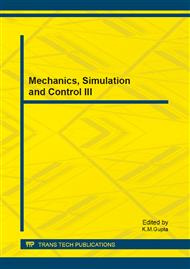p.73
p.78
p.84
p.90
p.96
p.101
p.106
p.113
p.118
Design of Fault Tolerant Control Laws for Jet Engines
Abstract:
Full Authority Digital Electronic Control (FADEC) system is common in all modern jet engines. In jet engine, the simplest control system is to produce desired engine thrust by changing the fuel flow. Since in flight engine thrust measurement is practically not possible, engine low pressure shaft rotational speed (N1/NL), engine pressure ratio (EPR), or exhaust jet temperature (EJT) has been effectively used as an indicator of the engine thrust. In this paper, the model used is twin spool turbofan engine. If any fault occurs in N1 sensor, the entire engine operation will be affected. Since there exists a unique aerodynamic relationship among the spool speeds, if any fault occurs in N1 sensor, engine thrust can be controlled with a certain amount of degradation using high pressure spool speed (N2/NH).Both soft and hard failures are detected using kalman filter, range, rate and comparison techniques. The effectiveness of the proposed approach is demonstrated by means of simulations.
Info:
Periodical:
Pages:
96-100
Citation:
Online since:
August 2013
Authors:
Price:
Сopyright:
© 2013 Trans Tech Publications Ltd. All Rights Reserved
Share:
Citation:


